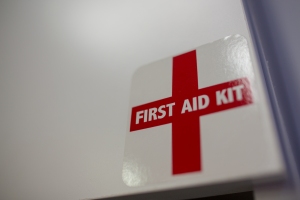
There will come a time in your career when someone will do something special for you. It could be anything from buying you lunch, to passing along a job lead or introducing you to a new client. When that happens, it’s up to you to show your gratitude.
But in our busy workdays, how many of us think to write a thank you note and actually take the time to do so? Even if we do think about it, how many times have you sat staring at the blank page wondering what to say?
It helps to work from a formula to get the task done quickly, efficiently, and with sincerity. Be sure you use professional quality note cards or stationery to write your message. Most thank-you notes I write contain three sentences: a thank-you intro, detailed sentence, and a closing remark.
First sentence: Thank the recipient for the gift, meeting, gesture of kindness, advice – whatever they did for you.
Second sentence: Explain why you appreciate the gift, meeting, advice or gesture.
Third sentence: Reiterate your interest in the job, client or product offering, or mention something specific about what you learned.
Closing sentence: Close the message by offering to return the favor, or how you plan to use the gift.
Example 1: Thank you for giving me the opportunity to interview for a Customer Service Associate with XYZ Company. I enjoyed talking with you and learning more about your organization. Based on what I learned about XYZ, I feel my skills and experience would be a strong match for your needs. I welcome the opportunity to answer any further questions you have about my background.
Example 2: Thank you for joining me for coffee last week. I enjoyed our conversation and appreciated learning about your company’s latest product innovations. I believe your new products will meet the needs of an underserved market. If there is anything I can do to help you promote these products, please contact me.
I have always preferred handwritten notes better than email. Handwritten notes show that you’ve taken the time to THINK about what you are writing. Because so few people are likely to send thank-you notes, let alone write them by hand, they’re more likely to make you stand out and make you more memorable.
Emailed messages are likely to get lost in the in-box, and texting is too informal that recipients may not take your expression of gratitude seriously.
If you’re looking to make yourself stand out to potential employers, clients or business associate, sending a thoughtfully-crafted, handwritten thank-you note may be the very tool you can use to make a strong, positive impression.

 While recovering in the hospital after surgery recently, I had the chance to quietly observe the nurses and medical staff as they performed their jobs each day. Of particular interest to me was the way they interacted with me and the other patients on the floor. Their bedside manner spoke volumes about their integrity and professionalism.
While recovering in the hospital after surgery recently, I had the chance to quietly observe the nurses and medical staff as they performed their jobs each day. Of particular interest to me was the way they interacted with me and the other patients on the floor. Their bedside manner spoke volumes about their integrity and professionalism.